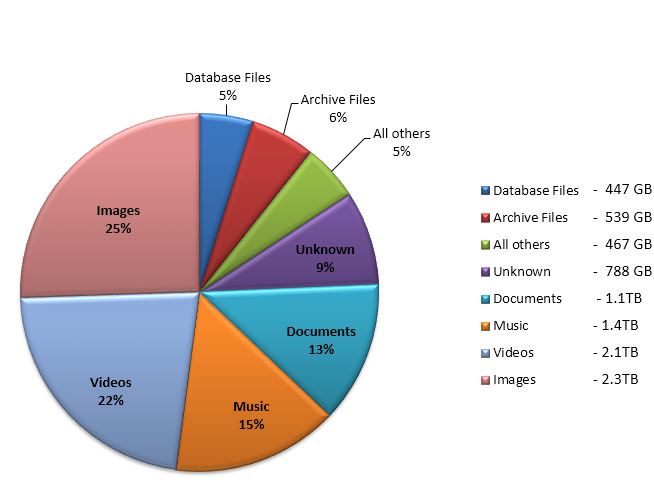Understanding Your Storage

Preparing to Replace Your Data Storage Array
If you’ve been using your data storage array for more than three years, you may be considering a replacement. Perhaps you just received a support renewal notification; or, if you’ve had this array for five years or more, the manufacturer may be announcing its End of Life (EOL). It could be you’ve simply outgrown the capacity and exceeded the performance of your current solution. Whatever the reason, there are some things you can do to prepare for your array search that will help you navigate the myriad of options and more quickly discern which solution is right for your environment.
In the next few blog posts, I will talk about some of the features/functions you’ll find in current data storage offerings and provide my take on how to determine their value for your environment. In this blog post, I want to describe some of the information you’ll need to understand about your current environment before you begin the search. Specifically, you should know what your usable capacity requirements are, the characteristics of the data on the storage system, and the workload profiles your array supports. If you understand these three things, it will be far easier for you to discern what features are important to you and which are not.
 Usable Capacity – While understanding the number, size, and speed of the drives in the current array is useful information, it doesn’t tell the whole story. Most storage arrays utilize some level of RAID protection (RAID 5, RAID 1, RAID 6, etc.); and, consequently, you will need to understand how RAID is implemented on your array and what capacity is provided AFTER taking these RAID levels into consideration. Beyond just capacity, this information can help define the levels of service you currently support for your applications. With this information you’ll be better prepared to have discussions around how a particular solution can provide the same levels of service you currently offer while also meeting your capacity requirements.
Usable Capacity – While understanding the number, size, and speed of the drives in the current array is useful information, it doesn’t tell the whole story. Most storage arrays utilize some level of RAID protection (RAID 5, RAID 1, RAID 6, etc.); and, consequently, you will need to understand how RAID is implemented on your array and what capacity is provided AFTER taking these RAID levels into consideration. Beyond just capacity, this information can help define the levels of service you currently support for your applications. With this information you’ll be better prepared to have discussions around how a particular solution can provide the same levels of service you currently offer while also meeting your capacity requirements.
Data Characteristics – It’s important to know about the data you store on the array. Does the array store Image files, User files (Word, Excel, PDF) Databases, a mix? Additionally, what are the attributes of those files? When were they created? How long has it been since these files were last accessed? Answers to these questions will help you more clearly define storage tiers and give you an indication of how well you could utilize array features like de-duplication, compression, and thin-provisioning. Classifying data in this way can also identify whether or not you have files that could be archived or deleted altogether. Capacity requirements can be significantly reduced in many cases if you discover that you are storing stale data that doesn’t need to be taking up space in your production environment.
Workload Profile – Measuring and documenting performance metrics such as IOPS, Throughput, and Latency, on the array as a whole and on each Storage Volume, will tell you the level of performance your array is being asked to support today. You should also understand the Read versus Write ratio and the Sequential versus Random operations. These metrics should be collected across different periods of a day and a week so that you can account for peaks when sizing a storage solution. It’s also important to associate performance to particular Applications. Understanding these metrics will help determine what storage tier Application volumes should be placed on and which could benefit from active-tiering versus those that should be pinned to a specific tier.
Categories
Search
Blog Categories
Related Resources
Archives
- July 2024
- June 2024
- May 2024
- April 2024
- March 2024
- January 2024
- October 2023
- September 2023
- August 2023
- July 2023
- June 2023
- May 2023
- April 2023
- March 2023
- February 2023
- January 2023
- October 2022
- July 2022
- June 2022
- May 2022
- April 2022
- March 2022
- February 2022
- January 2022
- December 2021
- November 2021
- October 2021
- September 2021
- August 2021
- July 2021
- June 2021
- May 2021
- April 2021
- March 2021
- February 2021
- January 2021
- December 2020
- November 2020
- October 2020
- September 2020
- August 2020
- July 2020
- June 2020
- May 2020
- April 2020
- March 2020
- February 2020
- January 2020
- December 2019
- November 2019
- October 2019
- September 2019
- August 2019
- July 2019
- June 2019
- May 2019
- April 2019
- March 2019
- February 2019
- January 2019
- December 2018
- November 2018
- October 2018
- September 2018
- August 2018
- July 2018
- June 2018
- May 2018
- April 2018
- March 2018
- February 2018
- January 2018
- December 2017
- November 2017
- October 2017
- September 2017
- August 2017
- July 2017
- June 2017
- May 2017
- April 2017
- March 2017
- February 2017
- January 2017
- December 2016
- November 2016
- October 2016
- September 2016
- August 2016
- July 2016
- June 2016
- May 2016
- March 2016
- February 2016
- January 2016
- December 2015
- October 2015
- September 2015
- August 2015
- July 2015
- June 2015
- May 2015
- April 2015
- March 2015
- February 2015
- January 2014
- February 2013




